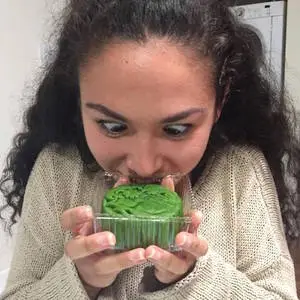Personally, I draw quite a distinction between pho vs ramen, but it’s come to my attention that not everyone does. When I was looking for a place to eat with my dad last week, I pointed out a pho place across the street and asked if he’d ever had pho. He said he had and reminded me of the restaurant Urban Ramen that we went to in California (which literally has ramen in the name). He asked what the difference was between pho vs ramen and I couldn’t really explain it, so I looked into the facts.
Just so nobody else ever has to get stuck in the debate of pho vs ramen, I’m about to break down each dish and show you what makes them each unique. If you’ve tasted both, you know that they really aren’t the same at all. If you haven’t, I understand your confusion.
What Is Pho?

Pho (pronounced “fuh”) is a Vietnamese soup made with broth, rice noodles, and usually some form of sliced meat. I prefer my pho simple with only chicken, but most people go with beef. A bowl of pho usually comes with a side of fresh herbs, lime and crunchy bean sprouts to top off your soup.
The origin of pho is a bit iffy. Some people believe it was derived from Mongolian Hot Pot, while others think the Vietnamese brought it over from China’s Yunnan Province, where they went to flee French occupation. Regardless of how it got to Vietnam, we know that this soup is a staple of Vietnamese cooking and a popular street food.
What Is Ramen?

Ramen, on the other hand, is a popular Japanese dish. It was originally imported from China but has become a staple in Japanese cuisine. Ramen dishes can be made from many different types of broth including Miso, Shoyu (Soy Sauce), Shio (Salt), and Tonkotsu (Pork Bone.) Although ramen can come with a variety of noodles, the most common are those curly ones we all know and love. Yes, like the ones you get from an instant noodle package. Or like JT’s 90’s ‘do
I think the most noticeable difference between pho vs ramen is the toppings. Whereas pho is usually more minimalistic with herbs and sprouts, ramen has a long list of ingredients that normally go with the soup. Common toppings include roasted pork, a hard or soft boiled egg, seaweed, sprouts, corn, and narutomaki (the little white disk with the pink swirl).
So what’s the difference?

Besides the origins, the difference between pho vs ramen is mostly in the noodle and the topping. Both start with a broth (although ramen has more common variations of broth), but you can instantly tell the difference by looking at those noodles. Pho noodles are rice noodles, so they’re translucent and light. Ramen noodles, however, have a special ingredient: kansui. Kansui is a form of alkaline water originally from Mongolia, which is said to give ramen noodles that firm texture.
The other big difference is the toppings. Although they can both vary tremendously in toppings, there are some staples that make each of them unique. The meat in pho is sliced quite thinly, whereas the meat in ramen is usually thicker and fattier. The egg is also a key part of a bowl of ramen, something you really wouldn’t find in the Vietnamese soup. Personally, I find ramen to be packed with more flavor and the broth tends to be a bit thicker than pho.
I know I said there are a lot of ramen options, but if you’ve ever been to a pho restaurant you know the menu can be endless. I’m sure there are some variations of both soups that are similar to each other, but when we get down to the root of the dish, the two soups are very different and have very different flavor profiles.
Now that you know the difference, go out and try both for yourself. Both are warm, cozy, and the perfect lunch to get you through a cold winter day. Both soups are also usually pretty cheap, so a pho or ramen date is a great way to hang out with friends on a budget. These soups are also great for late night/drunk eats. You may not find yourself craving soup after a night out, but once you try it you’ll be craving it all the time.


